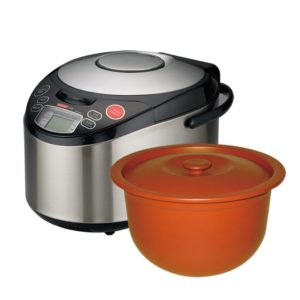I grew up in the era of processed food.
- Breakfast? Break out the milk, cereal and O.J.
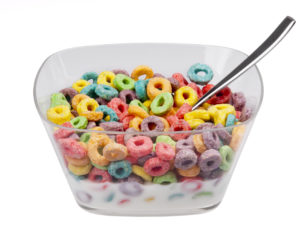
- Mid-morning snack? Grab a candy bar from the vending machine.
- A little soup and sandwich for lunch: grab bread, American cheese slices, and a can of soup—all warmed in the microwave, of course.
- Want cookies? Open a package in the cupboard. Grab some chips & canned salsa for an appetizer, and order pizza for dinner.
- Dessert is ice cream from the store, or maybe a colorful pack of candy.
This was a way of life for my generation, and we didn’t know any other way.
If someone pointed out that everything I ate in a given day was processed in some way, I wouldn’t even care, much less know what that meant. Looking back, I cringe at the things I once ate, and I marvel that people still eat this way.

Whenever I venture into the grocery store there are inevitably people with carts loaded full of popular processed items: TV dinners, ice cream, packaged snacks, breakfast waffles and canned everything.
I remind myself that there was a time when I didn’t see anything wrong with these items either, and I realize how important for us to educate ourselves about nutrition and the dangers of processed food.
My food education came in stages.
You could say I was privileged because my parents were very health-conscious. This gave me an interest in health and some knowledge that the food we eat does matter.
 Still, I bought into the idea that food is food, and surely the government and food companies wouldn’t allow anything into the marketplace that was harmful for us.
Still, I bought into the idea that food is food, and surely the government and food companies wouldn’t allow anything into the marketplace that was harmful for us.
…Right?… ….Right?
Slowly, though, I started to see the world differently. I began to realize that huge billion-dollar food companies were just that: profit-centered businesses.
I began to realize that my health was my own responsibility.
Wake-Up Call
When I began this research, and became aware of the toxins and nutritional deficit in almost all of the “food” I was eating, I became disillusioned and depressed.
I felt betrayed by the system, abandoned in a world that didn’t care whether I lived or died, as long as they made some money from me while I was here.
I began to educate myself. I realized that all of the information I needed was out there; I just had to find it. And with the internet these days, if we have anything in abundance, it’s information. Knowledge is power, and I was about to empower myself to a whole new level.
Big Food is Not Our Friend
We’ve literally grown up on processed food, and most of us never thought twice about it. Cereal for breakfast, candy for snacks, and fast food burgers for dinner was just our way of life.

When I began to realize that the food industry was not in the business of keeping me healthy, I started to educate myself, and I discovered a lot of things that needed to change.
I was overwhelmed: so many things to change in my own diet, not to mention changing the mammoth food industry as a whole.
But all I could do was begin with myself and try to educate others so they could make their own intelligent choices. A friend introduced me to a book called Nourishing Traditions that totally changed the way I think about food, along with a few other books (like this one).
 The first thing I began to eliminate from my diet was artificial sweeteners. The news was reporting studies that aspartame was definitively linked to cancer.
The first thing I began to eliminate from my diet was artificial sweeteners. The news was reporting studies that aspartame was definitively linked to cancer.
Wait, what?
I grew up drinking diet soda. Sugar is bad, right? But now the alternative is going to kill us.
Wonderful.
Next I saw studies of artificial colors linked to brain disorders such as autism and even tumors and cancer. I began studying the ingredients lists more carefully now, and started wondering what all of those other unpronounceable ingredients were. Research into each ingredient resulted in some unsettling information.
Almost every ingredient was questionable at best.
This is where it began: my disillusionment with the food system in America.
Up until this point I trusted the food supply. I realized now that food corporations weren’t trustworthy: they were after the bottom line, no matter how many corners needed cutting. I realized that cheap food comes at a cost, but I still didn’t understand the extent of that cost.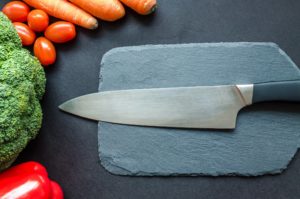
After I began to see that virtually no processed foods were free of the dangerous ingredients I had learned about, I realized that getting rid of processed food altogether was really the only option. Like everyone else, I was used to the convenience of processed food, and frankly, I didn’t know how to cook food from scratch.
Could I do it?
Organic Food 101
Around the same time I had discovered organic food. At first I didn’t believe the hype: I thought it was just another way to mark up the price of the same food.

Then I tasted it.
Apples, chicken, milk, you name it! It was like I’d never had these foods before.
An apple tasted more like an apple, and chicken was more… flavorful! Rich! Delicious! Almost everything I tried tasted better and was more colorful and healthy-looking, and because of this I concluded that these types of food probably contained more nutrients as well.
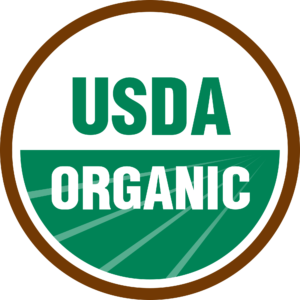 After tasting the difference, I was convinced. So my first thought was to switch to organic processed food.
After tasting the difference, I was convinced. So my first thought was to switch to organic processed food.
Genius, right?
Easy, awesome and healthy: win-win! And most of the offending ingredients I was trying to avoid were absent in the more expensive organic-certified packages. Score!
I also began following a number of health-living, organic-minded, do-it-yourself blogs; documenting various clever ways people have come up with to make their own versions of beloved, processed junk food.
After all, we grew up with it, and when you have a craving you can only resist it for so long. Fortunately, there are a lot of creative people out there who have already tested recipes for our favorite comfort and junk foods using real ingredients. Just try searching “paleo brownies,” “real food fudge,” or “grain free mac & cheese” to get the idea. If you want it, there is a healthy-substitution recipe out there that tastes good.
Enter Traditional Food
So here I am, fully committed to eating only organic food, and happily munching away on my organic crackers, cookies, pastas, breads, and cakes.
Enter Traditional Food.
I was introduced to a book called Nourishing Traditions by Sally Fallon, which documents and supports an earlier work by Weston A. Price called Nutrition and Physical Degeneration (both of these books are so good, and I highly recommend you read them).
These two books turned everything I knew on its head. They not only confirmed my unwilling belief that processed food (organic or not) was the devil, but they confirmed what I secretly knew instinctively, deep down: people have been thriving on their local, fresh, whole, traditional diets for millennia, and within a few years we industrialized the whole food system to make food cheaper, easier, and more convenient.
These “benefits” have a cost, however, and that cost is has become higher than anyone could have guessed. I started watching the growing number of documentaries showing the cover-ups in the industrial food system in America.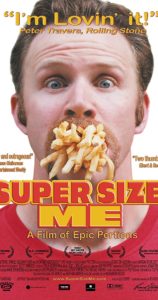

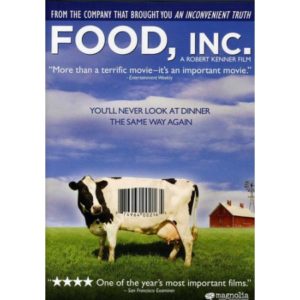
Cutting costs means using cheaper, more uniform (read: more chemically-dependent) ingredients in the processed food that had become essential in the American kitchen.
We have gotten used to cheap, fast, easy food that tastes great.
But does it? If there are chemicals in our food that trick our brains into thinking a food is delicious, is it really?
All of these discoveries inevitably led to what I probably knew all along:
I need to ditch the processed food and start making most food myself.
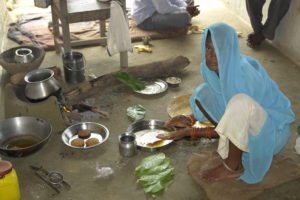 Thus began my journey into re-learning how to prepare meals from scratch. This has been a fundamental skill in the lives of people all over the world since the dawn of time, yet now for some reason it is a cause of trepidation and feelings of inadequacy for moms everywhere.
Thus began my journey into re-learning how to prepare meals from scratch. This has been a fundamental skill in the lives of people all over the world since the dawn of time, yet now for some reason it is a cause of trepidation and feelings of inadequacy for moms everywhere.
Is cooking food from scratch really all that difficult or time consuming?
Once I overcame my mental hurdle of cooking things from scratch, I was astonished at how easy most dishes really are. In fact, I found that I can make most things in the same amount of time (or less in some cases) as if I used a boxed or packaged ready-to-make version from the store.
Why do we pay more for inferior food when it’s not even easier?
One tool I have found invaluable for helping me to make delicious, nutritious meals from scratch every day in my own kitchen is VitaClay. With VitaClay, cooking has never been easier, more delicious or more nutritious. You won’t believe the difference clay can make!
Check out the VitaClay site–there are tons of great, healthy, easy recipes that can be made quickly–this isn’t your mother’s slow cooker, folks!
Why Cooking Whole Food Meals from Scratch is Important
In nature, if a food is delicious, brightly colored, and of a good texture, that means it is fresh, healthy and has a lot of nutrients.
In the last century, however, we have learned how to manipulate food with preservatives, colors, and artificial flavors so they look, taste and feel fresh—even if that food is a year old (or more).
From soda to pizza to chips to candy:
our food hardly even qualifies as food any more.
Consequences of a Modern Diet
Humans have only been eating processed food for a few decades, and coinciding exactly with that time frame, chronic diseases (and resulting mortality rates) have skyrocketed.
It doesn’t take a genius to see the correlation, proven or not.
What Can We Do?
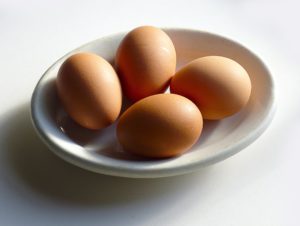 After becoming acquainted with fresh organic food (especially at farmer’s markets and CSA, which tend to be more fresh than those sitting on grocery store displays), I’ve come to see a difference in the food that we “should” be eating.
After becoming acquainted with fresh organic food (especially at farmer’s markets and CSA, which tend to be more fresh than those sitting on grocery store displays), I’ve come to see a difference in the food that we “should” be eating.
Spend some time at a farmer’s market, especially at the organic vegetable booths, and then go to the grocery store.
You’ll soon see the difference freshness can make.
Tomatoes in the produce section pale (literally) in comparison with those fresh from the farm, and apples are crisper, oranges juicier, colors brighter and tastes sweeter and stronger.
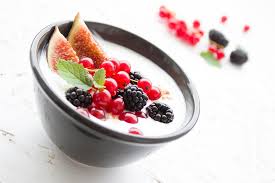
If the correlation between taste, texture, freshness, color and nutritional content holds, your money is better spent with fresh-from-the-farm produce than with sup-par vegetables and synthetic vitamin supplements.
But don’t take my word for it: check out the difference for yourself. Who knows; you may just start feeling better too.
Here’s a challenge: for the next month, try to eat only fresh, organic ingredients that you prepare into meals yourself. Skip the fast food and processed boxes and bags altogether.
See how you feel after that month, and think about the experiences of savoring fresh, nutritious, whole food. Then decide if the extra effort was worth it.
How to Make it Work.
Fortunately, more and more people are waking up to the reality that the food we eat quite literally determines our overall health, both now and in the future.

America is a land of creativity, intelligence and innovation. When we see a need, we create something to fill that need!
I’ve come to appreciate this so much in my journey towards health. If I am learning about how to make myself healthier and take control of my life, others are too–and they are finding ways to make that easier.
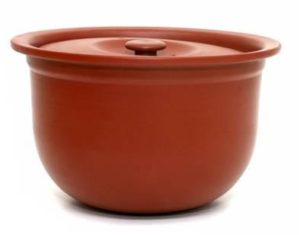 One tool I’ve already mentioned is VitaClay. And if you haven’t checked them out–do that now! I use my VitaClay on a daily basis and literally can’t live without it–it makes cooking whole foods from scratch so simple and QUICK!
One tool I’ve already mentioned is VitaClay. And if you haven’t checked them out–do that now! I use my VitaClay on a daily basis and literally can’t live without it–it makes cooking whole foods from scratch so simple and QUICK!
Another tool I’ve recently discovered is Simply Real Foods Market. I found out about them at a booth at a health convention recently, and I’m so excited about this online market: no initiation fees, and no shipping on orders over $50, plus they have a price match guarantee, and everything they carry is GMO free (a lot of it is organic too!).
Check them out and see how much money you can save on your organic grocery needs!
The main thing to do is START NOW. Go to your pantry and throw out all of the junk. Visit the store or farmer’s market (or Simply Real Foods!) and start filling your cart with fresh, whole foods (perimeter of the grocery store–don’t go down the aisles–it’s a trap!).
Make it Easier on Yourself
Do yourself a favor and buy a VitaClay or other cooker that helps you to make whole food meals more easily at home. If it’s easy you will do it; if it’s not, you won’t. Commit to your success now.
New to Freedom & Coffee? Start here.
Disclosure: many of the product links in this post are affiliate links, which means I will receive a small commission from any purchase. I only recommend products that I love and this is at no extra cost to you. Thank you for supporting our mission with your clicks!
Resources from this article:
Nutrition and Physical Degeneration by Weston A Price (foundational to my understanding of nutrition!)




